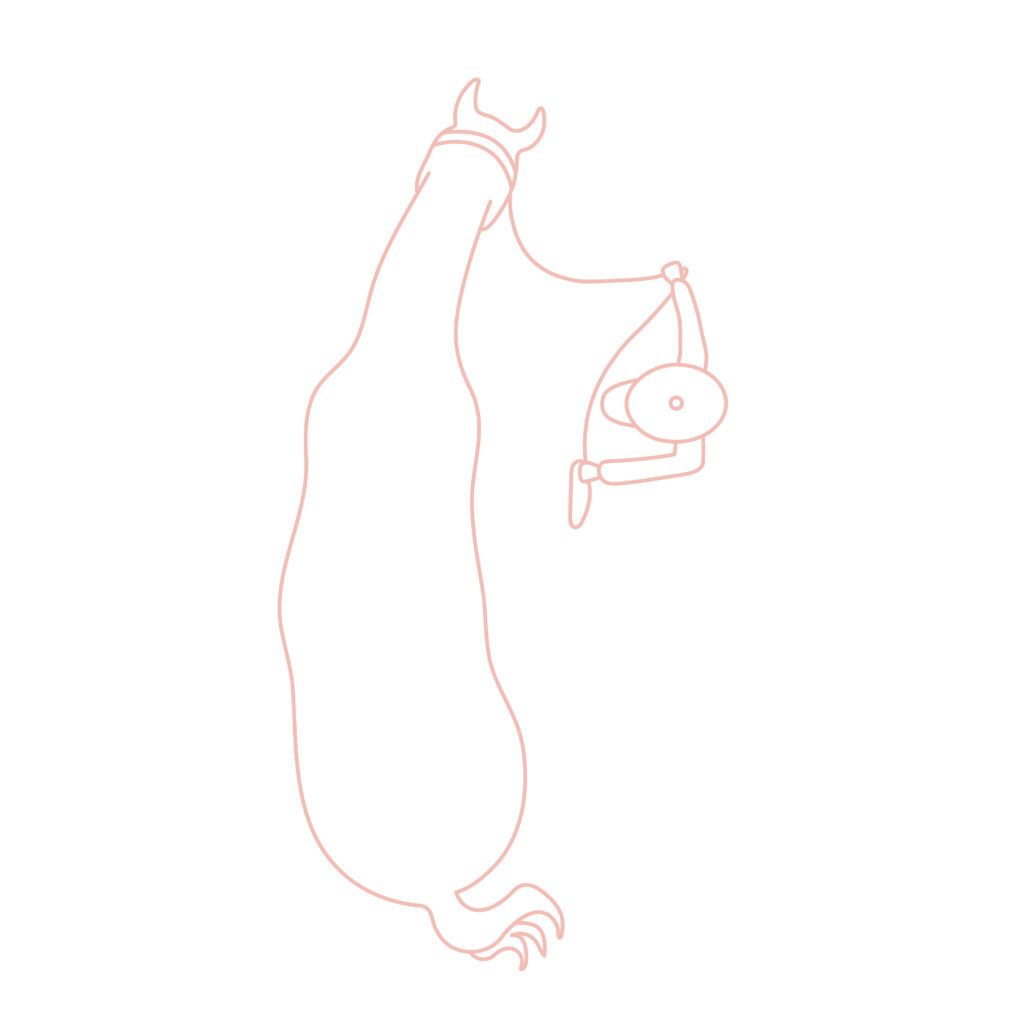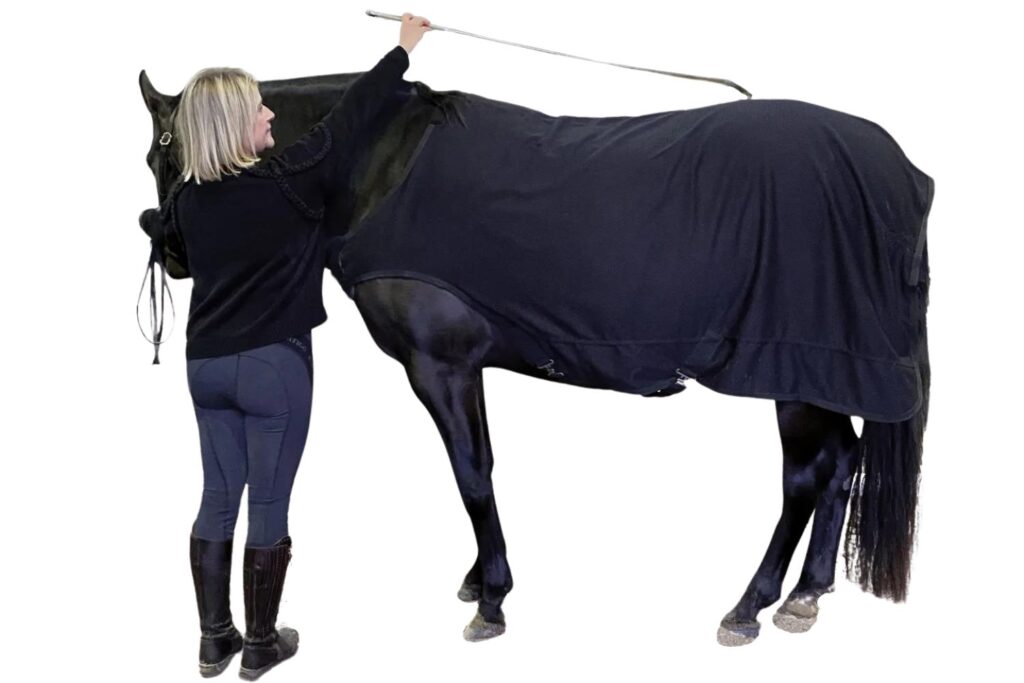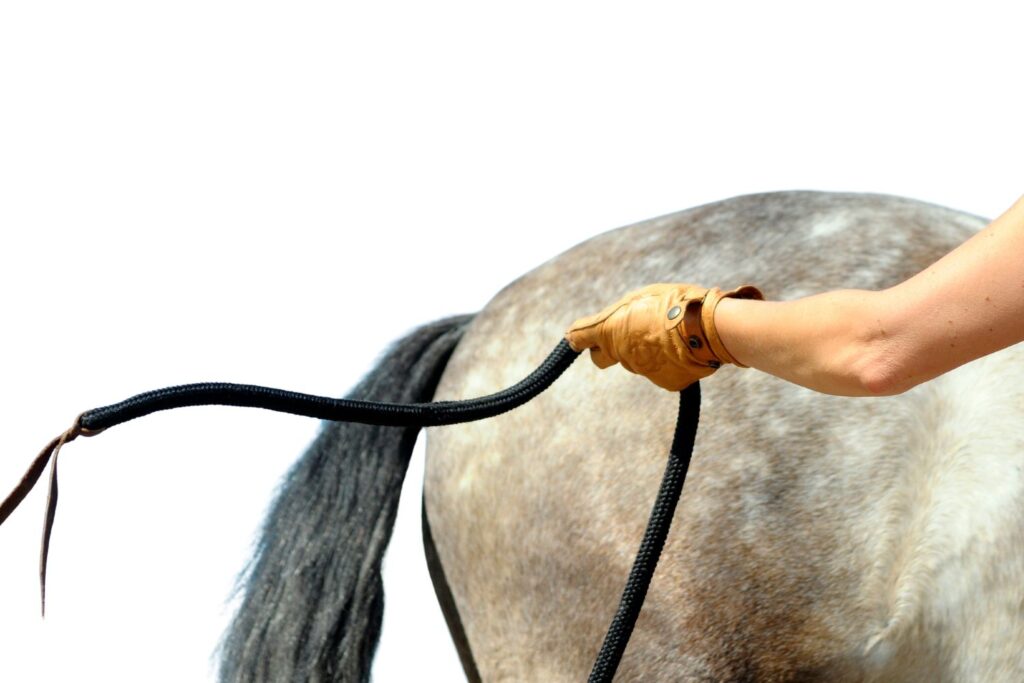Menu

Working your horse from the ground is becoming a more and more acknowledged tool for horse training and welfare. Doing some groundwork exercises can really help promote your horses body awareness and control. It can help build up muscles, promote correct carriage as well as creating a deep and trusting bond between you and your horse.
Doing groundwork can assist in most aspects of horse training as many of the exercises you can do from the ground can be transformed into ridden work and help the horse get a clearer understanding of the exercise and its own body. It is useful in any discipline and many exercises crosses boundaries of many styles of riding.
It is essential to state, that groundwork is quite a broad term, and it is used with different approaches. Groundwork can be part of desensitising your horse, giving your horse more confidence, doing reward training or even taking your horse for walks outside in the nature. Experts and trainers may have varying opinions on the best training forms and finding a style that suits your horse is important. Seek help from a trainer or other professionals if you are in doubt about where to start with groundwork and explore how it can help develop the training and bond between you and your horse.
Note that these exercises should be used as a guidance to how groundwork exercises can be done, but there are very different methods to use. If you want to get more details on each exercise, please contact us with this request and we may be able to produce a series.
It is optional to use treats, praise or pats (positive reinforcement) or release of pressure (negative reinforcement).
For groundwork you should use a rope halter with a long (3-5 meters) lead rope attached by a knot, not a clip. The horse can accidently hit the clip with his feet when walking head down, unknowingly teaching him not to rest his head down. Rope halters provide clear, uniform signals every time, whereas regular halters may twist and confuse the horse by accidently providing different signals even though you are asking for the same exercise.
Note that horse will not pick up an exercise on one side and automatically transfer it to the other. Therefore, you need to make sure to always practise them on both sides and have patience – one side can be more difficult than the other.
Read also: Environmental training: 8 easy exercises
If you are new to groundwork, this is a good place to start. Place yourself in front of your horse, with a little space between you. Walk backwards using your body language to welcome the horse to walk with you. Reward as soon as the horse draws towards you. When you stop, the horse needs to stop, so that you will have the same distance as when you started. If your horse doesn't stop, twirl the rope gently and stop as soon as he halts.
The reason you want to teach the horse to draw towards you, is to intrigue his attention towards your signals. This will make it easier to ask more difficult things of the horse, if the attention is on your body language
As the title states, this exercise requires the horse to step its hind leg under itself. Place your left hand on the rope about the 30-60 cm from the halter knot. Hold the rest of the rope in your right hand. Ask the horse to walk forwards around you in a circle to the left. Move your feet around the circle, but make sure you don’t follow the horse out on a bigger circle. Ask the horse gently to bend his head in and if necessary, gently place hand where your leg would be, so the horse does not fall in on the circle. Remove the pressure as soon as the horse bends in the ribcage. Watch as the horse will step his inside leg up and under himself. This really encourages correct movement of the body, teaching the horse the feeling of using the hind end and engaging the core. Further is this directly relatable to the ridden horse.
Practice on both sides but stop as soon as you get 3-5 good steps, as this is a workout for the horse.

This is the first step towards standing at the mounting block, but it is also acknowledged as a foundation for many dressage exercises. Establishing a clear communication for this exercise can be essential for a lot of ridden work, but also general flexibility, movement and coordination from the horse.
This exercise can be practiced in many ways, but an idea is to use a whip as an extension of your hand. Firstly, practise that your horse is not scared of the whip but understands it as a communication signal. Place it over the back of the horse to the opposite hind quarter. Tap the horse lightly and as soon as he moves a step to the side, stop, remove pressure and reward or applaud. Redo this until he understands that the tap means to move the hind over. Practise on both sides from the beginning.

Read also: 12 things you can do with your horse - Without being in the saddle
For a horse to walk backwards is naturally a way of showing submission, so make sure you have clear signals for backing up, without having to push or tug the horse. If he has problems walking backwards it could either be a clear indication that something is hurting or that he is not willing to submiss for several reason. If you are met by resistance and you have had him professionally checked for underlying health issues, using treats can be a motivating way for your horse to learn to back-up and it will be associated with a positive feeling.
A way to teach your horse to back up is by standing in front, but not too close. Wave the rope that is attached to the halter sideways and make a sound only used for backing up. In the future you should be able to just use the sound, which is useful in many situations – especially when mounting. Wave the rope but stand still until your horse moves the first leg backwards and then now walk with him to encourage the backwards motion. Make sure the horse moves the two diagonally feet together and stop once he has walked a few steps, unless you are instructed otherwise by your trainer. Backing up is requiring of the horse, mentally and physically, so make sure not to overdo it.
In the beginning, if the waving of the rope is not a clear signal for the horse, you can twirl the end of the rope with your right hand. The end goal is to have as subtle communication as possible.
Practising being able to send the horse away either out on a circle or away from your personal space is an essential exercise for performing other exercises, but also to create clear boundaries between you and your horse. Horses prefer knowing the rules and knowing what comes next. So, make sure you offer clear communication and do not change the ‘rules’ each time. It will confuse your horse and make him insecure.
Sending your horse away can be done by pointing your body language in the way you want him to go. Point with your left arm and finger with the rope that’s closest to your horse, lean slightly down and focus your energy towards the direction you want your horse to move. If you need to, twirl the end of your rope with your right hand towards the horse's bum. Never touch the bum with the rope, just communicate that you want him to walk that direction. As soon as he walks that direction, let down your arms and your energy. If he then stops, start over again. Remember to praise him when he does what you ask.

Having a horse that is able to work with you from a distance creates a confident and secure horse. This can be a difficult exercise for some horses, as they may find confidence in being close to the human. Instead take the time you need. It is an important foundation of your partnership.
Once the horse is comfortable working away from you, you can practise, the turning of direction. Again, there is numerous ways of teaching this signal, but a suggestion is, that once your horse has come to a halt, point your energy in the opposite direction. Do this by bending your upper body in that direction and pointing with your hand that has the lead rope closest to the halter. Twirl the end of the rope with the other hand if necessary.
Having established clear signals for change of direction can be very useful in many other situations such as loading your horse or getting him to face the direction you need.
We hope that some of these exercises might inspire you to do some groundwork with your horse, whether it's because the horse can't be ridden for a period of time, due to the weather, you want to strengthen your riding or just try something different, there are endless exercises to get you started.